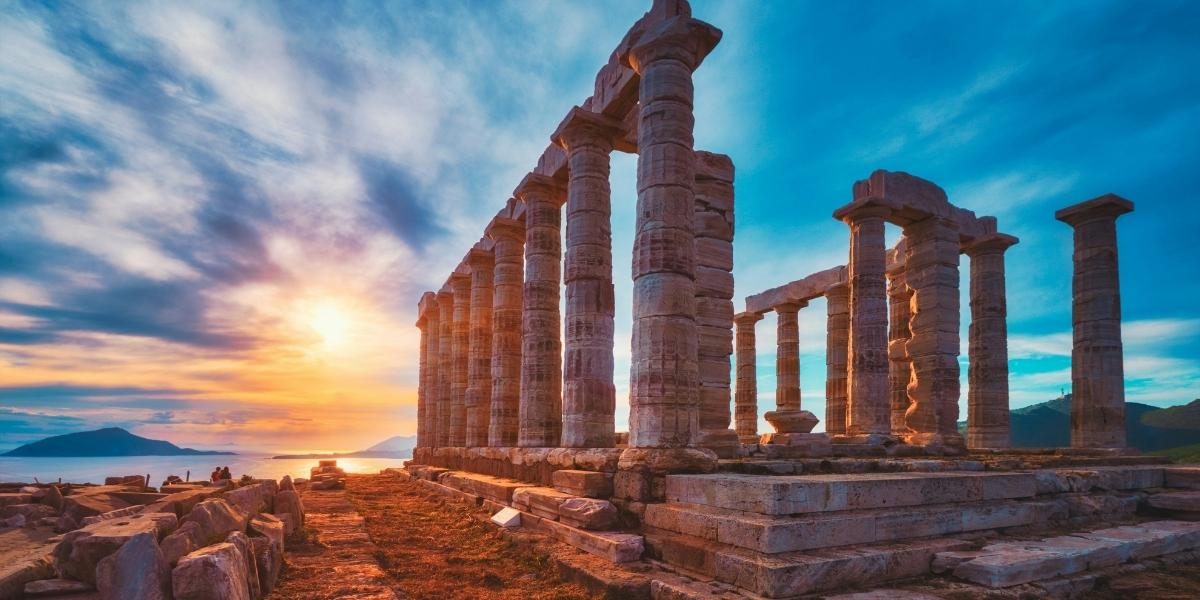The Statue of Zeus at Olympia is one of the greatest masterpieces of ancient Greek art, yet it no longer exists. This iconic sculpture was once housed in the Temple of Zeus at Olympia, one of the most revered sites in the ancient world. Created by the renowned sculptor Phidias around 435 BCE, the statue depicted the mighty Zeus sitting on a grand throne, symbolizing power and divine majesty. Today, the statue has been lost to history, but its legacy continues to inspire awe. This article explores the history, significance, and lasting impact of the Statue of Zeus at Olympia.
Read Also: Romanian Film Festival: A Cinematic Journey Through Culture and Storytelling
Why Was the Statue of Zeus at Olympia So Important?
The Statue of Zeus was not only a remarkable work of art but also a symbol of the Greek people’s devotion to their gods. Located in the Temple of Zeus at Olympia, the statue was designed to honor Zeus, the king of the Greek gods. At the time of its creation, the statue stood an impressive 12 meters (40 feet) tall, making it one of the largest and most awe-inspiring sculptures of its era.
The statue was crafted using ivory and gold-plated bronze, a combination that made it shimmer and glow in the dim light of the temple. The portrayal of Zeus seated on a majestic throne, holding a statue of Nike, the goddess of victory, in one hand and a scepter in the other, was an expression of the god’s supreme authority. Its size and grandeur left an indelible mark on visitors, reinforcing the reverence the ancient Greeks had for their deities.
The statue became an important symbol of ancient Greek religious life, and it was one of the Seven Wonders of the Ancient World, making it a symbol of Greece’s artistic and cultural supremacy.
What Happened to the Statue of Zeus at Olympia?
Despite its enormous cultural and historical significance, the Statue of Zeus was eventually lost to history. The exact details of its fate remain a subject of debate among scholars, but it is generally believed that the statue was destroyed by a fire in the 5th or 6th century CE. Some theories suggest that the statue may have been moved to Constantinople during the reign of Emperor Theodosius I, who ordered the closure of pagan temples. There, it may have been destroyed by a fire, which could explain the loss of this monumental sculpture.
Other theories suggest that the statue was dismantled and carried off during the Byzantine or later periods, possibly as part of an effort to repurpose its valuable materials. Regardless of how it happened, the statue’s loss was a tragic event, as it marked the end of an era of Greek art and religious grandeur.
Today, there are no remains of the statue at the original site in Olympia, and what we know about its appearance is based on descriptions from ancient texts and historical accounts. Some artists, like the Roman sculptor and architect Vitruvius, provided detailed descriptions of the statue, which have been used to recreate modern interpretations.
How Has the Statue of Zeus Influenced Art and Culture?
Even though the Statue of Zeus no longer exists, its influence on art and culture remains profound. As one of the Seven Wonders of the Ancient World, the statue served as a model for countless other works of art. The image of Zeus, seated in grandeur, has been replicated in numerous sculptures, paintings, and architectural designs over the centuries.
The statue also had a lasting impact on the development of monumental sculpture. Phidias’s work on the Statue of Zeus was groundbreaking, combining size, materials, and artistic skill in ways that had never been seen before. This set a new standard for sculptors, influencing the direction of Greek art for centuries.
In addition to its artistic legacy, the Statue of Zeus at Olympia has inspired modern interpretations of ancient Greece. The idea of powerful, larger-than-life deities continues to resonate in contemporary culture, from movies to literature. The imagery of Zeus, king of the gods, has remained a potent symbol of divine authority and power, influencing everything from modern superhero comics to epic fantasy films.
What Can We Learn from the Statue of Zeus at Olympia Today?
The Statue of Zeus at Olympia offers a window into the world of ancient Greece, providing insights into the culture, religious beliefs, and artistic achievements of the time. Although the statue is no longer physically present, its legacy endures through the writings of ancient historians, the art that was inspired by it, and the ruins of the Temple of Zeus itself, which still stand in Olympia today.
The statue also serves as a reminder of the impermanence of even the greatest works of art. Despite its monumental scale and the reverence it commanded, the Statue of Zeus was lost to the ravages of time and human activity. This can teach us the importance of preserving cultural heritage and understanding that the passage of time can lead to the erosion of even the most enduring creations.
While we can never fully recreate the awe-inspiring presence of the Statue of Zeus, the knowledge of its existence and the continued fascination with it demonstrate the lasting impact of ancient art on modern society. Its story, marked by triumph and loss, continues to captivate and inspire.
Read Also: Seattle’s Jazz Legacy: The Sound of Jackson Street
The Enduring Legacy of the Statue of Zeus
The Statue of Zeus at Olympia, though lost to history, remains one of the most important cultural and artistic symbols of the ancient world. Created by the legendary sculptor Phidias, it embodied the might of Zeus and the reverence that the ancient Greeks held for their gods. Its grandeur and artistry set a benchmark for future generations, influencing the development of monumental sculpture and continuing to inspire artistic expression to this day.
Though the physical statue no longer exists, its memory lives on through ancient texts, artistic representations, and the ruins of Olympia, where it once stood. The Statue of Zeus reminds us of the incredible achievements of ancient Greece and the enduring power of art and culture, even in the face of time’s ravages.






